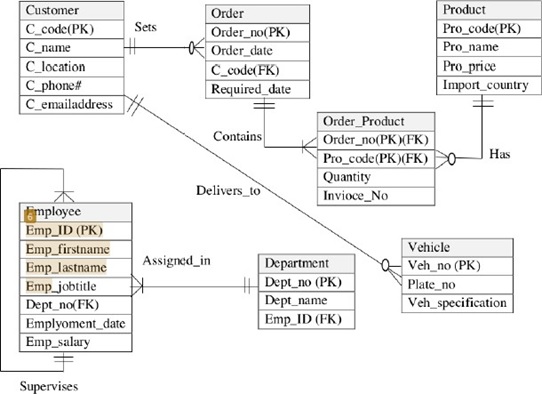Reference no: EM132392151
Problem Statement:
The mass-spring-damper (MSD) is an important and commonly used mechanical construct in engineering. It finds use across a wide variety of applications and understanding the dynamic behaviour of this system is vital to making an effective design. In this assignment you will model a MSD that represents the wheel suspension of a vehicle, and simulate the dynamic response of the system to a range of external perturbations.
Task 1 - Unforced System
The model of a simple unforced MSD is given as (Fig. 1),
mx''+ cx'+ kx = 0 ..... (1)
where, m is the supported mass (kg), c is the damper coefficient (Ns/m), k is the spring coefficient (N/m) and x is the displacement of the vehicle body. For the sake of simplicity assume that the wheel stays fixed.

Figure 1: Unforced Mass-Spring-Damper Model
1. Consider 3 representative vehicle types, Type 1 = Compact Car, Type 2 = Average Family Sedan, Type 3 = Large Pickup Truck. Look online and find an example from each vehicle type. State your choices and set the mass m in equation (1) above as 1/4 times the vehicle masses (we will simulate only one wheel for each car type).
2. Write a MATLAB program to simulate the response of each of the 3 systems when released from a compression of x = 10 cm, i.e. plot the displacement of the supported mass with respect to time. To do this, write your own implementation of the 4th order Runge-Kutta method. Do not use any of MATLAB's inbuilt ODE solvers. The damping coefficient may be computed as,
c = 2mωnξ
where ωn = √(k/m) is the natural frequency of the system, and ξ is a damping ratio. For this task set the spring constant k = 10.0 k/m and ξ = 0.5.
3. Compare the results of the 3 vehicle models and discuss the maximum overshoot of the supported mass as well as the time taken for the system to settle.
Task 2 - Forced System
Vehicles are typically subject to external forces, vibrations etc. To simulate this behaviour of the system we can add an external oscillatory force to the problem as,
mx'' + cx' + kx = f sin (ωt) ..... (2)
where, f = 2mN, ω = 3.5 ωn and t denotes the time. For this forced system find a value of the damping ratio ξ (and hence also c) such that the maximum steady state overshoot in displacement for all vehicles is no more than 2 cm. All other values are the same as for Task 1. You may use a brute force method to find ξ, i.e. manually change the parameters and evaluate the results.